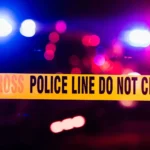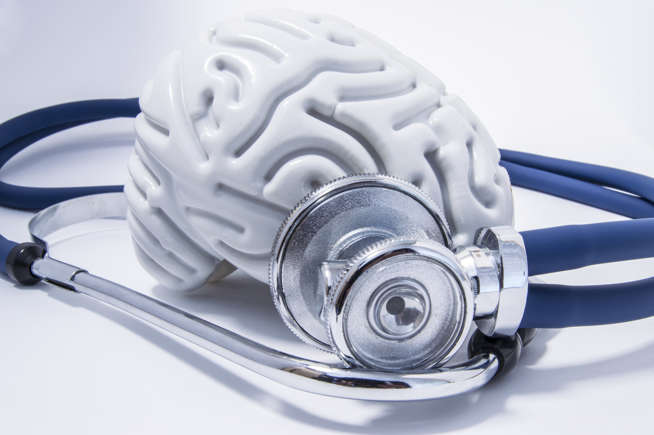Do you know the warning signs of a stroke?©iStock
Did you know that strokes are the second most common cause of death in the world? According to the World Health Organization (WHO), they’re also the third most common cause of disability. Despite how prevalent they are, it’s still challenging to differentiate stroke symptoms from those of other illnesses.
Are you ready to learn how to identify a stroke? Then click through this list of must-know warning signs. It might save a life.
Dangerous disease©Shutterstock
According to WHO, stroke caused the deaths of 6.2 million individuals in 2015. This ranking places stroke second on the organization’s list of the top 10 leading causes of death around the world, second only to ischemic heart disease.
What is a stroke?©iStock
According to the World Health Organization (WHO), a stroke occurs when certain brain cells abruptly die due to a lack of oxygen. This happens when blood flow to the brain is disrupted by either a blockage or rupture of an artery in the brain.
Quick response©iStock
When it comes to detecting strokes and getting help, speed is everything. This is because immediate treatment can make the difference between life and death, or the difference between a complete recovery and a long-term disability.
Diagnosis©Shutterstock
The American Stroke Association (ASA) recommends using the F.A.S.T. assessment to recognize stroke symptoms. This involves checking for signs of drooping face (F), weakness in the arm (A), and difficulty speaking (S). If you notice all of these then it’s time (T) to make an emergency call. Most stroke cases can only be identified with this test.
Face©iStock
To begin F.A.S.T., you should observe if one side of the face is drooping. Ask the person to smile and assess if their smile appears uneven or lopsided.
Arms©iStock
Is there any weakness in the individual’s arms? Ask them to raise both arms. Does one arm appear lower than the other or are they unable to lift one of their arms?
Speech©iStock
Ask them to say a straightforward phrase. Is there any slurring in their speech?
Time©iStock
The ASA advises that if someone exhibits any of these symptoms, even if they go away, it is important to contact emergency services and inform them that it could be a stroke. Assistance will be dispatched promptly.
Emergency©iStock
Always call for urgent help, regardless of any uncertainty about the symptoms, as time could be critical.
Describe the symptoms©iStock
When contacting emergency services, describe the symptoms to the phone operator.
The ASA says that additional symptoms might present individually or alongside the signs of F.A.S.T.
Disorientation©Shutterstock
Is there sudden confusion, trouble with speech, or difficulty understanding when communicating?
Body numbness©iStock
Other possible symptoms include a sudden feeling of numbness or weakness in the face, arm, or leg, particularly on one side of the body.
How’s the vision?©Shutterstock
Is the individual encountering new problems with their vision? This can affect one or both eyes.
Dizziness©iStock
Other signs of a stroke include difficulty with walking, feeling dizzy, and experiencing loss of balance or coordination.
Headache©iStock
Is the individual suffering an intense headache with no apparent cause?
Types of strokes©iStock
Stroke can occur in two forms: ischemic stroke and hemorrhagic stroke.
Ischemic stroke©iStock
This is the most common type of stroke, impacting approximately 80% of patients. This variation of stroke is a result of insufficient blood flow to the brain.
Ischemic stroke subtype©iStock
In this type of stroke, there is also Transient Ischemic Attack (TIA), where a temporary blockage occurs in one of the blood vessels.
Ischemic stroke risk factors©iStock
Certain behaviors and clinical conditions can increase the risk of this particular type of stroke. These include hypertension, obesity, elevated cholesterol levels, a family history of heart disease or diabetes, excessive alcohol consumption, and smoking.
Hemorrhagic stroke©iStock
This stroke is not very common and happens when a blood vessel ruptures inside the skull.
Hemorrhagic stroke causes©Shutterstock
Hypertension is the primary cause of this kind of stroke, as it weakens brain arteries, increasing their vulnerability to rupture.
Hemorrhagic stroke risk factor©iStock
Factors that increase the risk include obesity, alcohol abuse, smoking, stress, and inactivity.
Stroke is more prevalent in adults aged 65 and above.
Most affected groups©iStock
The risk of the disease in women can be heightened by pregnancy and the use of hormonal contraceptives.
Diagnosis©iStock
During the clinical examination, a doctor will inquire about the patient’s symptoms and assess their continuity. The physician will also gather details concerning the patient’s medication and inquire about their family’s history of heart disease and stroke.
Medical exam©iStock
The doctor will assess various indicators such as blood pressure and heart rate. Additionally, the doctor may evaluate their eyes.
Further exams©iStock
A blood test can be used to determine the clotting time of blood, assess the sugar level, and identify any imbalances in the chemical composition of the blood.
Further exams©iStock
The physician may request an MRI and CT scan for examination purposes.
Further exams©iStock
A brain angiogram is a test that allows doctors to view the arteries in the brain and neck in order to identify any potential changes. By using an ultrasound on the carotid artery, doctors can examine if there is a buildup of fat deposits within the arteries and determine if blood flow is normal.
Echocardiogram©iStock
During this examination, the physician will observe detailed images of the heart to identify any clots that may potentially migrate to the brain, resulting in a stroke.
Ischemic stroke treatment©iStock
Emergency medication can enhance survival rates and minimize additional complications. Depending on the situation, doctors may administer these medications through direct brain injection or surgical intervention.
Hemorrhagic stroke treatment©iStock
In an emergency situation, doctors utilize medications to reduce intracranial pressure, lower blood pressure, and prevent vasospasm and seizures. Surgery may be necessary to repair damaged blood vessels.
Complications to follow©iStock
A stroke can result in temporary or permanent difficulties, depending on its severity and the duration of oxygen deprivation. Fortunately, certain consequences can be reversed through recovery and rehabilitation programs.
• 3w










